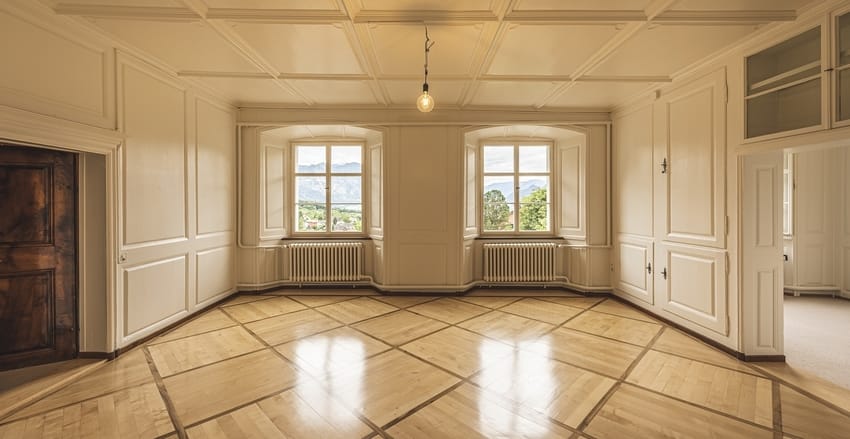Last Updated on January 1, 2024
Dehumidifiers are great appliances to control humidity levels. Adequate humidity in your living space increases comfortability and keeps you and your home healthy. When you turn your dehumidifier ON it will run until selected humidity level is achieved. However, what if it keeps shutting off before desired relative humidity is attained? What if your dehumidifier turns on and off constantly during operation?
In this article, I discuss specific reasons your dehumidifier shows this intermittent behavior. I have also covered solutions to these problems for you. Even though I recommend a certified technician in some of the cases, it is a great time and money saver if you know the problem beforehand.
1. Temperature Too Low for Dehumidification
Most of the dehumidifiers available in the market operate on vapor compression cycle. This means they use refrigerant for dehumidification process, just like air conditioners.
An airflow is established through the dehumidifier by using a fan. Air comes in contact with the cool evaporator coils of the dehumidifier. These coils are at a temperature lower than due point of the air. Due point is the temperature below which water condenses from air and dehumidification is carried out.
The lower the temperature of the room, the lower is the dew point temperature and the lower is the temperature required by evaporator coils in your dehumidifier in order to extract humidity from air.
However, when the temperature of ambient air is very low, it results in icing of the coils. It is also referred to as the frosting up of the dehumidifier. The ice buildup will cause inhibition of airflow through cooling coils. As a result, airflow rate will be reduced, leading to reduction in dehumidification.
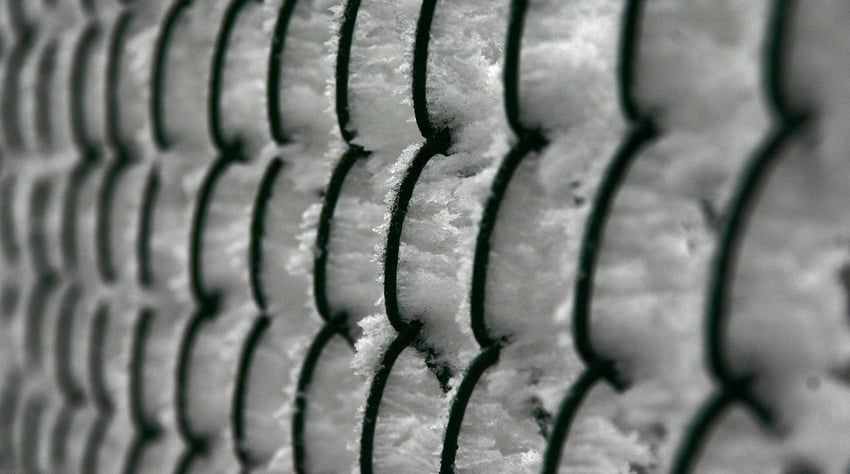
For dehumidifier operation, ideal room temperature is between 70°F and 90°F (21°C to 32°C). Refrigerant dehumidifiers should not be used below 60°F (about 15°C). You should never use a refrigerant dehumidifier below 41°F (5°C)
If you operate it at sufficiently lower than prescribed temperature, your evaporator coils will slowly develop ice. This will deteriorate the dehumidification process and eventually stop it.
Some modern dehumidifiers have auto-defrosting or anti-icing feature. This allows them to automatically turn off the compressor and keep fan running until ice melts.
Solutions
In a region where temperature is unsuitably low for refrigerant dehumidifier to work, there are two solutions.
- First option is to increase the temperature of the room to be greater than the prescribed limit i.e., 60-degree Fahrenheit. This will prevent frosting of dehumidifier and keep your room at comfortable temperature.
- The second option is to use a different kind of dehumidifier. Go with a desiccant humidifier or a LGR (Low Grain Refrigerant) dehumidifier. Desiccant dehumidifiers are not dependent on room temperature, so you are entirely going to get rid of that problem.
Pro Tip
Heating the room is suitable if you live in the room. In other locations of your home, like crawl space, connecting room, basement etc., I recommend you use a desiccant dehumidifier. To save you the trouble of finding it, I selected one for you. Click here for specifications.
2. Dirty and Blocked Dehumidifier Filter
Air that passes through the dehumidifier is cleaned by an air filter. Some dehumidifiers have two filters for that purpose, one at the intake and the other at delivery/exhaust.
When the filters are unclean and mucky, airflow through them is restricted. As a result, compressor has to work harder in order to sustain the airflow. This causes more energy consumption and heat generation.
This may also cause your compressor to heat up more than it should.
However, a more probable event due to clogged filter is frosting of the evaporator coils. The reason is low flow rate of air.
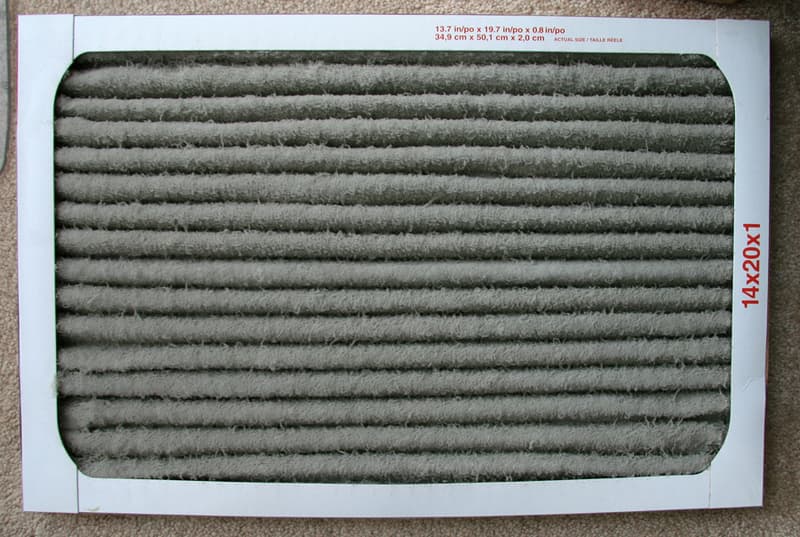
When the flow rate becomes inadequately low, quantity of air coming in contact with cooling coils will be reduced. As a result, the temperature of the coils will go very low to cause ice buildup.
Consequently, dehumidification will be reduced, and your dehumidifier compressor will shutoff, going into defrosting mode, to melt the ice.
Pro Tip: If your dehumidifier keeps going into defrosting mode and you have not given a check to your filters for a while, then it is highly probable that unclean filter is the problem.
Solutions
Clean your filters in routine. Some recommend it every week, the others in every three weeks and some after certain hours have passed.
I recommend you look this time duration in the instruction manual that comes with the product. If you don’t find it there, check the product website or you can contact your dehumidifier manufacturer.
However, if you keep on doing it every week or so, you will get an idea when to clean your filters, depending upon the operation of your dehumidifier.
Some dehumidifiers also have a filter reset indicator light. It turns on after specific number of hours of operation have passed. This duration is set by manufacturer.
Cleaning Procedure: The filters in dehumidifiers are almost always reusable, so you will not have to change them. Use lukewarm water to wash the air filter gently. Allow it to dry properly before inserting it back.
3. Inadequate Dehumidifier Fan or Blower Speed
Fan is the component of dehumidifier that pushes air through it. The term ‘blower’ is also used interchangeably with fan, mainly depending upon the design. However, both perform the same function i.e., generating forced airflow.
When air comes in contact with cool evaporator coils, heat is taken up by the coils, temperature of air is reduced below dew point and humidity is extracted from it.
The flowrate of air through the dehumidifier needs to be adequate.
With less airflow rate, insufficient air comes in contact will cooling coils. As a result, less cooling will be used up from evaporator coils. This will cause their temperature to reduce to drastically low levels, causing ice buildup in the coils.
Frosting will cause the dehumidifier to go into defrosting or anti-ice mode until ice melts. This will take more time than usual due to lower fan speed.
After this ice melts, dehumidifier compressor will start again. However due to less airflow ice will develop repeatedly. These short cycles will cause more energy consumption for less and incomplete dehumidifier operation and reduced life.
Causes and Solutions of Slow or Non-Operational Dehumidifier Fan
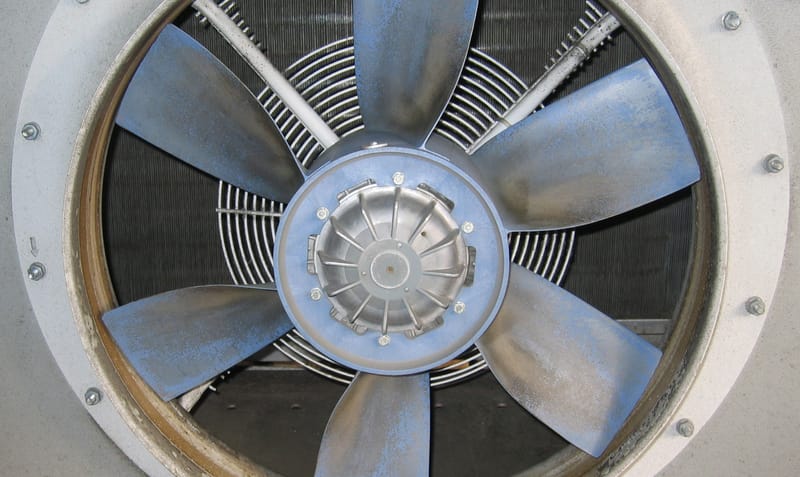
There are three common causes of a slow fan/blower with less speed or one that is not working:
1. Blower Motor Is Faulty
One of the causes for a slow blower, especially if it does not start, is a damaged blower motor.
Motor needs to be checked for shortages and continuation. In case motor is the culprit, you have two solutions. Either get it repaired or get a new one.
If you discover a complicated internal fault, I personally advice you to just buy a new one. It will save you a lot of trouble.
Just remember to properly check the specifications and description before getting a new blower motor. It should be the same as the one that was primarily fitted by the manufacturer.
2. Fan/Blower Blades are Damaged
Another reason why required airflow could not be established may be damaged blower blades.
In this case, motor and blower are running at the required RPM. However, not enough air is being pulled by the blades. If you see a broken fragment or any other damage to blower blades, you will have to get it replaced.
I advise you to contact product support to get the recommended certified parts.
3. Faulty Electronic Components Associated with Running of Fan
There are so many factors involved in running your dehumidifier fan. For example, controlling fan speed, variable switching, operating it with/without compressor etc.
One of the reasons why your fan is running at a slow speed, or not running at all, could be electronic components like switch, capacitor, relay etc.
Tracking the faulty component is not that complicated. Check the current in the entire circuit of the control board. When you find discontinuation of electric current after a certain component, it is very likely it is the one at fault and needs replacement.
I recommend that you only do it if you have experience in this field. Best is to get it check by a certified technician.
I will give you an example by this video I found the other day. It will give an idea about tracking the fault when your dehumidifier fan is not running .
4. Lack of Refrigerant Due to Leakage
If your dehumidifier keeps turning OFF and ON, then one of the problems could be low amount of refrigerant.
Firstly, you should know that this is not supposed to happen in refrigerant dehumidifiers. They are supposed to keep the same amount of refrigerant in them for life.
The refrigerant during the dehumidifier operation shifts between liquid and gaseous state but never reduces in quantity.
So low quantity of refrigerant in dehumidifier is almost always due to leakage of refrigerant. Poor construction or impact directly to lines could cause leakage in your dehumidifier.
But why does your dehumidifier intermittently turn ON and OFF when it is low on refrigerant?
Actually, leakage of refrigerant causes reduction in pressure in refrigerant lines. Pressure is reduced to the extent that compressor turns off before the completion of cooling cycle.
After sometime when pressure in lines increases, compressor kicks back ON. This working in short incomplete cycles causes high energy usage and may damage your dehumidifier components.
Another indication of leakage is icing on evaporator coils despite adequate room temperature and air flow.
Solutions
If your dehumidifier is running in short cycles as stated above, diagnose for refrigerant leaks.
It may or may not be difficult to detect leaks. If your dehumidifier got a hit someplace or you notice an unusual bend, it is very likely that there is leak in the same area.
However, this is something that requires experience. So I recommend you call a certified HVAC technician to do this for you. Technician will detect the leak, patch it and recharge for you. It will save you a lot of time and trouble.
Advice: Firstly, check your dehumidifier for other reasons mentioned, that may have caused it to shut off. Rule out the convenient causes, then consider getting your dehumidifier checked for refrigerant loss.
5. Clogged Dehumidifier Coils
When air moves through your dehumidifier, it comes in contact with cooling coils. As a result, its temperature drops below due point and humidity in it is extracted and collects in drain pan.
When I say cooling coils, I refer to evaporator coils. However, air also moves through condenser coils afterwards. Condenser coils restore the temperature of cool air to room temperature.
For proper and consistent dehumidification, air needs to come in contact with the evaporator coils at a sufficient flowrate.
If you have clogged evaporator and condenser coils, air passage will be blocked partially. Consequently, airflow rate will drop to the extent to cause frosting. This ice on coils will halt dehumidifier operation temporarily.
Dust and dirt keep accumulating in coils with time and their cleaning is required from time to time.
Dirty coils will deteriorate quality of air that moves through your dehumidifier. This can have a negative effect on your health. This will also cause the unit to work harder resulting in increased electricity bills and less life.
Solutions
Clean your dehumidifier coils by using a soft brush. Clean them in the direction of tubes. The reason is that these coils are very sensitive and delicate.
In case their geometry is affected, this will cause to reduce efficiency of your dehumidifier or worse may cause a leak and coils will need a replacement.
Accessibility of dehumidifier coils depends upon the manufacturer and model of your unit. Some give easy access to them, while others don’t. If they are not easily accessible and you don’t have enough experience, you can also vacuum through the holes above coils.
Best is to expose the dehumidifier coils. Clean debris and dirt carefully, with a suitable brush, in gentle upward and downward motion. Then you could either use a solution like warm water and detergent or dish washer liquid to clean your dehumidifier coils.
Cleaning Hack: A really simple product caught my eye the other day. It is specifically built for cleaning coils and able to easily liquefy dirt, oil and grease. It consists of corrosion inhibitors (saves from corrosion unlike water) and has a pleasant smell after application. Give a look at its specification by clicking here.
6. Malfunctioning Dehumidifier Humidistat
Humidistat or humidity control is one of the core components of dehumidifier. It is what decides when your dehumidifier needs to start and when it should stop.
Here is how a humidistat function?
Humidistat continuously detects percentage humidity in the vicinity of dehumidifier. When humidity reaches selected value, it signals the compressor to turn off. When humidity increases sufficiently again, it restarts cooling cycle again by switching ON the compressor.
The electronic humidity sensor is at the inlet of your dehumidifier and it is exposed to adequate flowrate of air. This allows most reliable, accurate and instantaneous measurement of overall humidity in the room.

If your dehumidifier humidistat is faulty, it will measure inaccurate relative humidity. This will cause your humidity control to shutoff compressor before desired value of humidity is achieved. As a result, you will have incomplete dehumidification.
Pro Tip: One of the most probable indications of a faulty humidistat is that you will have to select somewhat lower value of humidity than required in the controls to achieve the required dehumidification.
Other Reasons for Inaccurate Humidistat Measurement
In case humidistat is measuring incorrect humidity, it is not necessary it is faulty. There are couple of other reasons that could be causing this:
- Humidity sensor is in contact with wet coils.
- Reduced flowrate of air, possibly due to blockage, is causing wrong measurement of humidity. Top reasons for this could be dirty filters or clogged coils.
- Humidity sensor has displaced from default position.
Solutions
A simple, but not the most convenient and reliable method, for measuring humidity is by an external humidity monitor, for example, hygrometer.
Here’s a simple method to know the error in your dehumidifier’s humidistat:
- Select required relative humidity in the control panel of your dehumidifier.
- Humidistat will turn off humidifier at this humidity.
- Now compare this value with a humidity monitor that serves as a standard for humidity measurement in this comparison.
- In theory, the difference of relative humidity between dehumidifier humidistat and the humidity monitor is error in the humidistat of your dehumidifier.
Why Testing Accuracy of Dehumidifier Humidistat Is Not So Simple?
In reality, testing humidistat is far more complicated. So many other factors have to be taken into account before knowing actual error in your humidistat.
I am discussing most important factors below for your knowledge:
Precision and Accuracy of Humidity Monitor
Firstly, precision and accuracy of equipment, which you are considering as standard, has to be taken in account.
All humidity monitors have some error in their measurement. However, as quality increases, accuracy and precision increase, but so does the price.
Exposure to Identical Environmental Condition
Environment chosen, for measurement of humidity, for humidistat and the humidity monitor, must be same.
As the name suggests, relative humidity is actually relative. It changes inversely with temperature. Thereby, for true comparison, both need to be exposed to same temperature and external conditions.
Relation of Time with Humidity Sensor Accuracy
Accuracy of humidity sensors drift with time. With time, error in any humidity measuring instrument will increase and accuracy will decrease.
Just to give you an idea, a humidity meter will drift from its specified accuracy 2-5% per year. So, in three years, humidity sensor could be off by +-6% to +-15% in relative humidity measurement.
Exposure to Sufficient Air Flowrate
You will not get instantaneous and overall value of relative humidity in your room without consistent flow of air.
With humidity sensor at inlet, and consistent airflow through the dehumidifier, you are getting precise room humidity.
However, you have to expose humidity meter to the same sufficient flowrate too. Otherwise, you will get incorrect measurement and comparison will be inappropriate.
Note: Relative humidity is different in different regions of the room. So, both humidistat and humidity monitor, that is set as standard, need to test air in the same region of room.
Pro Tip: Measure with the humidity monitor at the inlet of your dehumidifier. This will allow similar air flowrate and position as the humidity sensor of your dehumidifier.
Identifying error in humidistat is a complex phenomenon. That is why, if your humidistat has not completely failed, I recommend getting it tested from your manufacturer certified technician.
7. Faulty Compressor Unit
The most important component required for your dehumidifier operation is compressor. It is in fact the only necessary moving component in cooling cycle.
Compressor is what pressurizes refrigerant, then heat is taken out from it and it is expanded, before it goes in to cooling coils.
Not very common cause of your dehumidifier short cycling, but a possible one is malfunctioning compressor. If your dehumidifier keeps shutting off after regular small intervals, it could be due to compressor overheating.
If there is a buildup in your dehumidifier compressor that is restricting the flow of refrigerant, it will overheat and shutdown.
Compressor will restart its operation after it cools down sufficiently. However, it will overheat again in no time and turn off.
Due to this, your dehumidifier will operate in short cycles and keep turning off, without achieving desired dehumidification.
Solutions
Unfortunately, when it comes to compressor malfunctioning, in almost all cases, it cannot be repaired. You will have to replace it entirely. In either case call a certified AC technician to resolve this problem for you.
Personal Advice: Compressor is one of the most expensive components of your dehumidifier. Thereby, before replacement, it is a good idea to compare the price of new compressor with your dehumidifier.
If you ask me, in case your dehumidifier compressor is unrepairable (which most of the time it is), I suggest you to just buy a new unit. It will save you a lot of trouble and possibly money in the long run.
8. Obstructions In Airflow
As I discussed earlier, your dehumidifier needs consistent and sufficient airflow to operate properly. When airflow is lower than required you will face two problems with it.
First, frosting in the cooling coils. The reason is enough heat not transferred from air to coils. This causes their temperature to go very low.
Second, overheating of the compressor. It has to perform more work to maintain essential airflow.
Both of these problems can cause your dehumidifier to turn Off before completing required operation.
Anything that causes blockage or serves as an obstruction in the path of air through dehumidifier may cause frosting and overheating of compressor. As a result, your dehumidifier will turn OFF until compressor cools down and ice melts.

Solutions
- Keep enough space in the surroundings of your dehumidifier to cause active airflow.
- Air from your living space to dehumidifier and vice versa must not be prohibited in any way.
- Plants, furniture, decoration pieces or any hindering material should be at sufficient distance from your unit.
9. Problems With Float Switch and Bucket Placement
A dehumidifier collects water from air in your home and stores it in the drain bucket. When the bucket is full, it needs to be emptied and reattached again.
When your bucket fills up, internally fitted float switch signals to the dehumidifier control board to interrupt the dehumidifier operation. If this doesn’t happen, quantity of water collected will get higher than the capacity of drain bucket and spill on the floor.
On the other hand, if your float switch is faulty, it may trip and signal dehumidifier compressor and fan/blower to turn off even when the bucket is not full.
Diagnosing this problem is usually easy. If your dehumidifier turns OFF after running for a short while, look for the bucket full indicator light.
Despite the empty bucket, if it indicates that it is full, by blinking or being constantly ON, you know that equipment that detects water level is defective. It is restricting the unit from continuously performing dehumidification to complete the process.
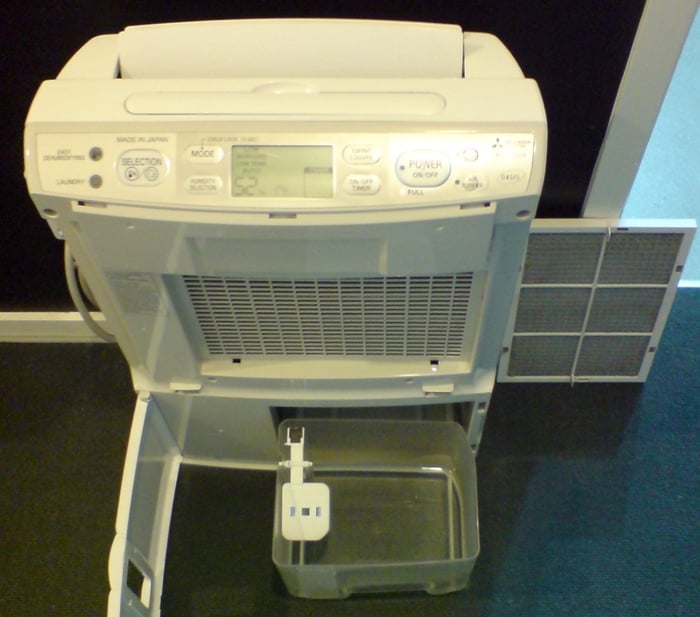
Another problem could be improper bucket placement. Actually, when you place drain bucket back in the dehumidifier after emptying or cleaning, there is a push switch that is pressed, and your dehumidifier starts working.
The goal of this push switch is to ensure proper bucket placement. Without it, if the bucket is not properly fitted, your dehumidifier will keep on running and cause the water to spill on the floor. This is also bad in terms of safety.
For many dehumidifiers, if drain bucket is not properly fitted, then a loose connection could keep the dehumidifier from turning ON or working continuously. It is also possible that the push switch or water container fixture is damaged.
If disturbing the bucket or applying pressure on it slightly causes your dehumidifier to start or stop working then there is a good chance that push switch might be at fault.
Solutions
If bucket full indicator light is ON, then this is most probably prohibiting the operation of your dehumidifier. Take following measures to resolve this:
- Take off the bucket. If it is full, empty it and reattach, your dehumidifier will start running.
- If it is empty and your dehumidifier is indicating a full container, this means there is a problem with float valve. Either it needs adjustment, repairing or replacement.
Second cause for this problem could be incorrect placement of your dehumidifier’s bucket container. Here’s the way for quick diagnosis and solution:
- To resolve this, look if something is obstructing proper fixing of the container.
- If it fixes properly and entirely, then try to apply pressure on push switch, by hand, without bucket.
- If this turns dehumidifier ON, then that switch needs replacement.
Note: In case push switch is faulty, you will not necessarily know that by using pressure in different directions on it. In case it is electrically failed, you will need to test continuity when it is turned ON.
10. Incorrect Settings in Dehumidifier Control Panel
It is not necessary that your dehumidifier keeps shutting OFF because it is defective. There are various options and modes you can select in dehumidifier controls. Your dehumidifier may perform incomplete operation due to the settings you have selected in its control panel.
We have a better sense of feeling temperature than humidity. Generally ideal range of relative humidity is from 30-50 %. It should always be lower than 60 %.
If you choose desired humidity in the control panel that is pretty close to actual humidity in the room, it will cause your dehumidifier to shut down after a little operation.
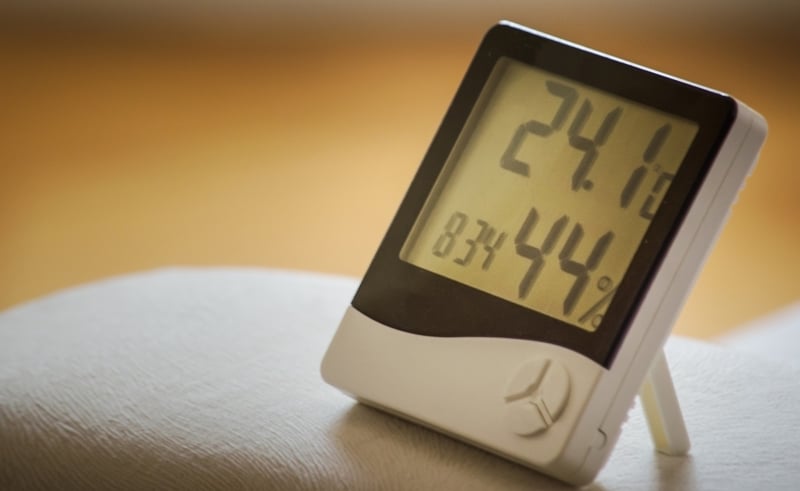
This way, for you, dehumidification will not be complete, but the unit had already performed its job the way it is supposed to.
Another reason your dehumidifier may run only for a short while, due to its control panel options, is the automatic turn OFF by its timer.
You see when you are running your dehumidifier on timer mode, then it doesn’t matter what humidity you have selected in the humidistat.
Timer will turn Off dehumidifier when selected time duration is complete, even if the dehumidification process is not complete.
Solutions
Give a check to settings in your dehumidifier control panel. Make sure timer or any other restricting modes are disabled.
As far as the selection of appropriate desired humidity value is concerned, it is not necessary to know the exact value of relative humidity in your living space with a hygrometer. You could just decide that with a little experience based on your dehumidifier’s running time for humidity conditions that you like.
Pro-Tip: Don’t worry if you are overwhelmed by a lot of controls and worried about changes in the settings. You can always reset the dehumidifier to primary default settings.
11. Malfunctioning Electronic Components
Most dehumidifiers are based on vapor compression cycle. In this cooling cycle, basic fundamental operations include compression, condensation, expansion and evaporation.
However, for desired functionality according to our requirements, several electronic components assist these fundamental processes.
If your dehumidifier keeps turning ON and OFF, runs in short cycles, or is unable to start, it is possible that one or more of these electronic components are defective or damaged.
Despite humidistat, which I discussed earlier, there are several other electronic components too. Just to have an idea, look at purposes and functionalities of these components:
- Capacitor: Stores and releases electrical energy. Dehumidifier generally has two capacitors. One is associated with compressor startup and the second one creates magnetic flux to rotate the fan/blower.
- Relay: Works as a low power switch to control high power switch. Allows safe switching of dehumidifier components.
- Switch: Controls power and speed of fan.
- Control Board: All electronic components link to it. Contains multiple lines with different voltages.
- Fuse: Prevents burning of dehumidifier components due to electrical surges.
There can be a defect in electrical wiring, or one of the electronic components, that is causing your dehumidifier to repeatedly shutoff.
For example, if your dehumidifier runs for short durations, with incomplete operation, it is usually due to a faulty capacitor. This is because a capacitor is a requirement for continuous power to the compressor.
In most cases, if capacitor is damaged, you will see it bulged on top. It is highly uncertain that despite the bulged body of capacitor it is working fine.
Solutions
How do you detect faults with electrical wiring and electronic components?
- Give a look to external and internal electrical wiring and make sure everything looks fine. There should not be any burnt or damaged section.
- Then check for any loose connections in your dehumidifier unit. Do this with unit turned OFF and tighten them if needed.
- Next, you need to check for faults in various components of your dehumidifier. All electronic components (including compressor) connect to control board. To do that, trace current through the circuit. A multimeter would be a useful device for this.
- Look for discontinuation in the circuit, especially before and after components.
- Remember, different components require different kind of testing. For example, for capacitor, current should slowly reduce from maximum to minimum when testing on multimeter. However, for relay, after it is switched on, before and after is theoretically same.
- Also check resistors for continuity with the same device.
You should only check electrical components and wiring yourself if you have basic experience, understanding, and familiarity with this subject.
Best is to call a certified electrician who will diagnose faulty components for you, repair them, or replace them with the exact model and specifications.
These videos below will give you an idea of diagnosis and repair/replacement of these components:
12. Your Dehumidifier Bucket is Filled
Sometimes, your dehumidifier shuts down quickly just because its water bucket is full. But why would your dehumidifier fill so quickly? Well, there are a bunch of reasons for that.
- The most common is very high relative humidity in your region.
- On top of that, if your dehumidifier has a low bucket capacity, it will fill much sooner. This will cause your unit to shut down much sooner.
- Another cause could be clogged filters that are blocking the air causing icing of the coils. This melts and keeps filling the unit at a high rate.
Don’t worry there are easy solutions for these problems. You would be able to resolve them without repairing or changing your dehumidifier.
Solutions
If your dehumidifier shuts off earlier than expected, before achieving the required humidity levels in the room, it is time to give a look at the water level in its bucket.
If its bucket is full, first observe if there is high humidity at the time when you planned to use your dehumidifier and if it’s the proper size.
Even if the capacity of your dehumidifier unit is very low, you don’t need to replace your dehumidifier with one that carries higher humidity.
The solution is to install a drain hose with your dehumidifier. This way all the water gathered from the atmosphere will automatically come out and you will not have to change the bucket ever again.
If all of a sudden in a matter of some days, you find your dehumidifier filling up again and again, a well-suspected reason could be a dirty filer.
Cleaning filters is easy as they are always reusable. Just take them out, clean them with this method I mentioned previously, and then install them again.
13. Dehumidifier is Too Big for The Space
A dehumidifier much larger than the size of the room might also cause your dehumidifier to shut off again and again.
But, how do you know if a larger size of dehumidifier is the reason for its repeated shutting off?
If your dehumidifier shuts off surprisingly quickly but regulates humidity to the selected value in the controls, this is an indication that it is of a relatively large size.
Using a large-sized dehumidifier would feel like a great idea, right? But it can have certain demerits:
- A bigger dehumidifier would turn ON and OFF more often, this could lead to more electricity usage.
- It may cause excessive dryness if it doesn’t have humidity control.
- Larger dehumidifier means a larger compressor and fan, meaning more noise.
Solutions
Remember this happens only if the dehumidifier is too large-sized than the recommended size for your room.
Let me explain to you with a simple example …
Let’s say you are using a 265 ft dehumidifier in a 200 sq ft room. In this case, there wouldn’t be much difference in the running time of the dehumidifier.
On the other hand, dehumidification would be way quicker if you have a 224 sq ft room (average in United States) and you are using a dehumidifier suitable for a 1700 sq ft room.
By the don’t worry if the dehumidifier size is a little higher, something like the first example. In fact, it is usually a good idea to use a dehumidifier a little large for the size of your room.
Now coming to solutions, if you do have a very large dehumidifier:
One is to simply use a dehumidifier unit that is of the right capacity for the room. This is an expensive option though. I have a quicker and inexpensive solution to this problem.
There is an easy fix to very quick dehumidification by a large-sized dehumidifier that will need no replacement and expensive options of this sort. It is to reduce the dehumidification rate of your unit.
An easy way to do so is to reduce your dehumidifier’s fan speed. This will cause less air to move through the unit and slow down the operation.
This will prevent consistent shutting OFF and ON of the unit saving electricity. It will reduce noise too as the compressor will have to work less and at reduced power.



